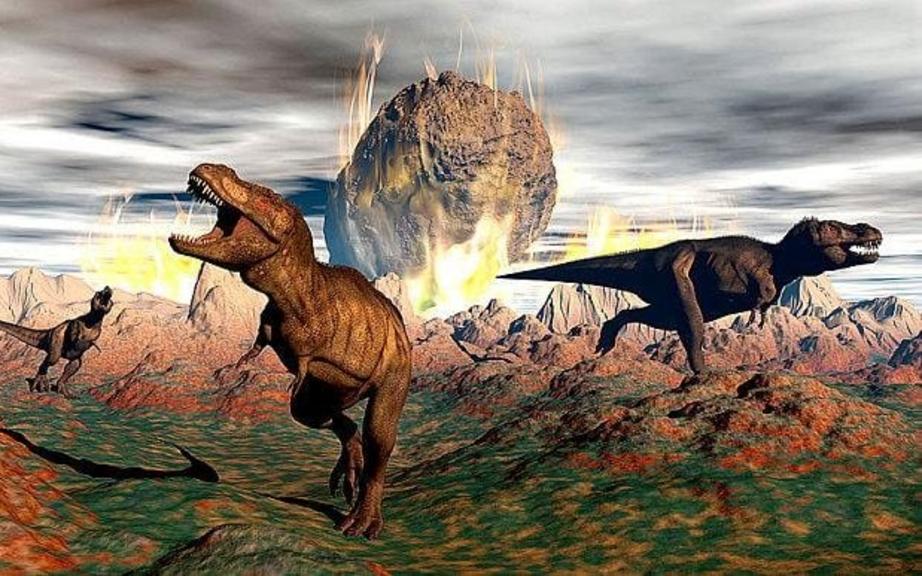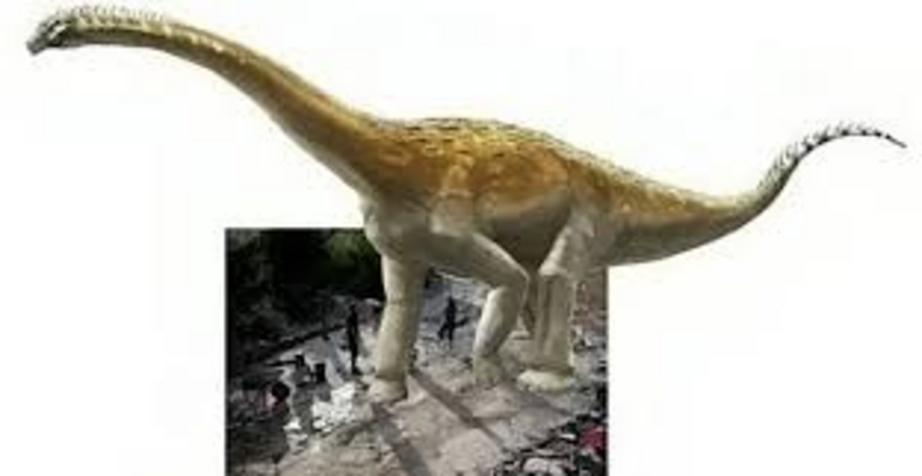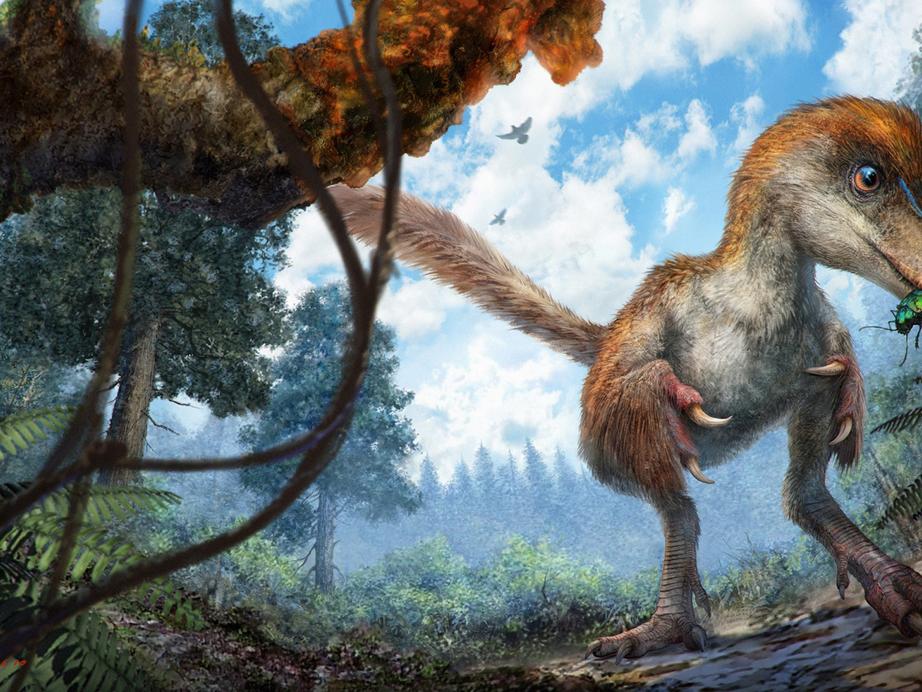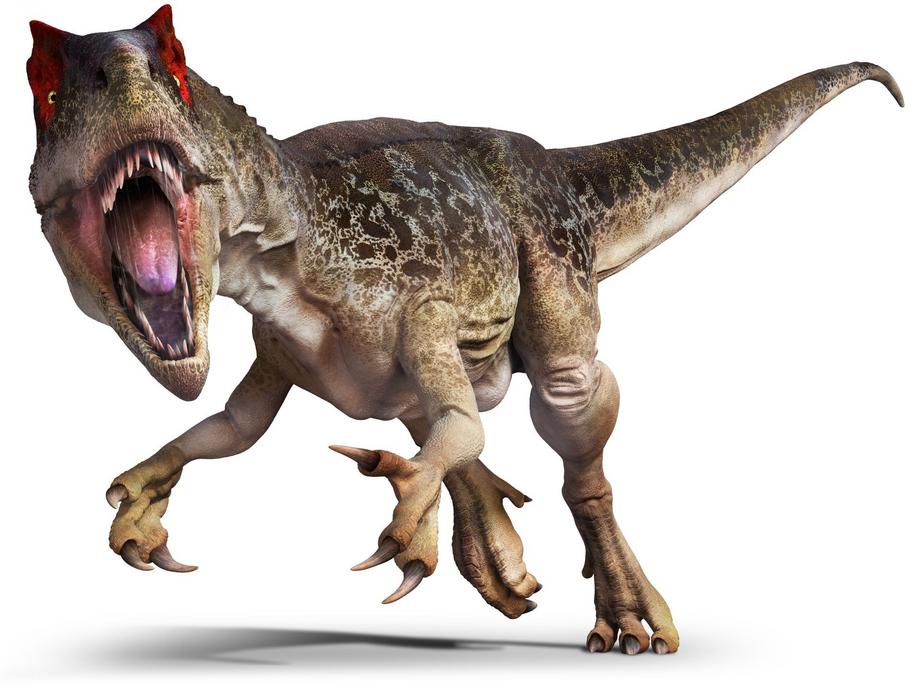The secret world of dinosaur tracks
Dinosaurs have left behind clues, like bones and feathers, that tell us what they looked like when they walked the earth. But their fossilized tracks can tell us how they literally walked the earth. Dr. Stephen Gatesy, Professor of Biology at Brown University, and colleagues have been using a high-tech scanner more commonly seen in hospital to examine exactly that.
Tracks are the patterns animals leave behind in the earth as they move across it. But not all of the earth is the same. Sometimes it’s sand, sometimes it’s deep thick mud, sometimes hard mud, sometimes just a dry patch of dirt. Each kind of earth – often referred to as a substrate – mixed with a different kind of foot movement, can produce many different kinds of tracks.

(video can be accessed at source link below)
Dr. Stephen Gatesy, Dr. Peter Falkingham, and doctoral student Morgan Turner
(1) An animation showing a Hitchcock collection slab (gray) with a reconstructed exit feature (yellow and red) that previously broke off.
“As a locomotion person, this was not just about understanding where they put their feet, like a dance chart, but how the actual feet are moving,” said Gatesy, “the larger context is that we are trying to understand how dinosaurs moved.”
A renowned collection of fossilized dinosaur tracks is the Hitchcock Ichnology Collection at Amherst College. It has over 1,100 individual “slabs,” or rocks with dinosaur tracks in them, most of which trace back to the Jurassic Era or around 200 million years ago. The collection is named after Edward Hitchcock who began this collection in 1835. Because all these slabs had such different track or footprint patterns, he had assumed that there were well over 70 species of bird-like animals (which we now know were dinosaurs) walking through what is now the Connecticut Valley.

Imagine walking in deep mud so soft that you sink all the up to your knee. As you struggle to pull back out, the sloppy mud fills back in where your boot was as it comes back to the surface. The track you just left behind does not simply look like the shape of the boot on the very surface of the mud. It is a deep three-dimensional structure leaving behind a pattern that reflects the whole movement of your foot and legs as you entered and exited the mud.
If your track were to then fossilize, the rock could be broken apart layer by layer. Progressing downward from the top to the deepest your foot sank, you would observe a different shaped track at each level. If someone only observed each layer separately, and did not know they were each part of a larger three dimensional track, they might think that these were all different tracks made by many different animals.

This same misinterpretation of fossilized tracks has probably happened with the Hitchcock collection. Gatesy, doctoral student Morgan Turner, and colleague Peter Falkingham wanted to take a closer look at the Hitchcock collection to see if some of the documented footprints were just a two dimensional slice of a deeper fossilized track. To do this, Gatesy took a few samples to a CT scanner at the University of Texas.
A CT scanner uses narrow X-ray beams to create two-dimensional images of what is inside an object. This type of scanning is now commonly used to distinguish fossilized bones from their surrounding fossilized substrate. Despite fossilized tracks consisting only of substrate minus the bones, thin internal layers of sediment could be distinguished inside many of the Hitchcock specimens. By reconstructing some of these internal layers, Gatesy assembled three-dimensional images of the slabs to see the full fossilized dinosaur track.
Gatesy was not disappointed with the CT scan results, “You could see downward pointing v-like structures… the v is a sign of a toe entering,” said Gatesy of the CT scans. These patterns were familiar because they were similar to footprints made by modern day birds. Dr. Gatesy and his colleagues have had guineafowl walk through different sediments to learn about the tracks they leave behind.
One of the most revealing structures in these slabs are foot-exit features (Animation 1). Foot-exit features are important for capturing the entire motion of the foot and limbs to fully understand how these now-extinct animals moved. “Hitchcock never saw them,” Gatesy said, “they always broke off.” Gatesy said he wishes he could show these features uncovered in the team’s CT scans to Edward Hitchcock. He was probably looking for these features but could never see them with the limited technology existing back then.

Instead of the 70 species Hitchcock originally identified, “There were probably more like like two or three different species in different substrates and different movements at various depths,” said Gatesy. “It’s amazing how a few different foot anatomies can make the diversity we see in the Hitchcock collection.”
While these CT scans have revealed the complexity of these dinosaur tracks, there is still a lot of work to be done in interpreting the fossils. Knowing where the foot entered and exited the fossil is not always as intuitive as you might think. What you see in the fossil is a track made from foot movement, not necessarily the shape of the foot itself.
To test their hypotheses of how dinosaur feet moved, Turner and Gatesy animated a virtual dinosaur foot that follows toe paths through the Hitchcock slabs recreated from their CT scans. Falkingham then simulates a track by creating millions of virtual particles that represent mud flowing around the foot (Animation 2). Together, the team has had to tweak their simulations repeatedly to get the virtual track to match those observed in the Hitchcock collection. This trial and error process is slow, but Gatesy is patient and determined, “It’s a kind of puzzle that I just love.”
For the rest of this article please go to source link below.
For full references please use source link below.
Video can be accessed at source link below.

